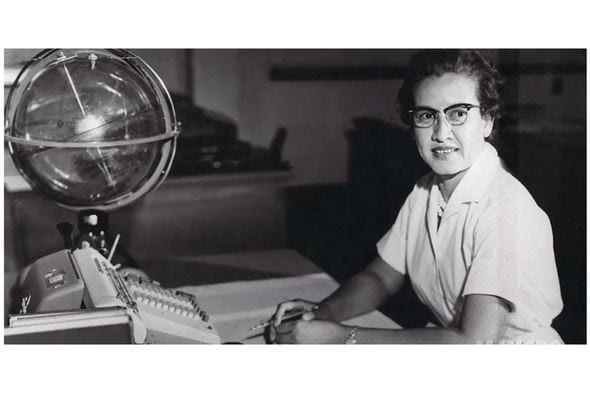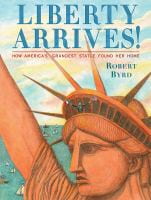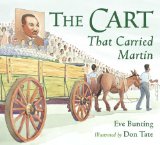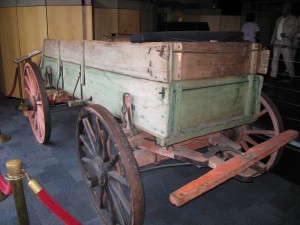Emily Warren Roebling
In all, several thousand people took part over fourteen years…They worked a ten-hour day, six days a week, and they were all men – with the sole exception of Emily Roebling.
David McCullough, Brave Companions
 How Emily Saved the Bridge: The Story of Emily Warren Roebling and the Building of the Brooklyn Bridge by Frieda Wishinsky, illustrations by Natalie Nelson (Groundwood Books)
How Emily Saved the Bridge: The Story of Emily Warren Roebling and the Building of the Brooklyn Bridge by Frieda Wishinsky, illustrations by Natalie Nelson (Groundwood Books)
During the mid to late 1800s, many New Yorkers knew who Emily Warren Roebling was. Author Frieda Wishinsky introduces this bright woman to young readers in How Emily Saved the Bridge. Without Emily, the Brooklyn Bridge might be far different than it is today.
Few women received any formal higher education when Emily Warren was growing up in the 1850s, especially a girl from a family of twelve. Fortunately for Emily, one of her older brothers, Gouverneur Kemble (G.K.), believed in her capabilities, and he enrolled her in a school in Washington, D.C. There she studied math and science as well as French and geography. In 1864, Emily visited G.K. where he commanded Union troops. There, she met Washington Roebling who was an engineer on her brother’s staff. They soon married.
 Washington Roebling’s father was nationally famous as a bridge-builder, and he designed the plans for the new construction of the Brooklyn Bridge. During the preliminary building of the bridge, John died as the result of a construction accident. Emily encouraged Washington to take over as the chief engineer in his father’s place. All went well for Washington until he became very sick from the bends which occurred when he worked on the caissons for the bridge. With her husband bedridden, Emily began to bring his instructions to the project. During that time, she kept the construction records and learned everything that she could about the engineering details. Through constant study, she learned more about the bridge construction than anyone else on the site.
Washington Roebling’s father was nationally famous as a bridge-builder, and he designed the plans for the new construction of the Brooklyn Bridge. During the preliminary building of the bridge, John died as the result of a construction accident. Emily encouraged Washington to take over as the chief engineer in his father’s place. All went well for Washington until he became very sick from the bends which occurred when he worked on the caissons for the bridge. With her husband bedridden, Emily began to bring his instructions to the project. During that time, she kept the construction records and learned everything that she could about the engineering details. Through constant study, she learned more about the bridge construction than anyone else on the site.
In 1883, when the bridge was opened, Emily Warren Roebling was the first to cross in her carriage. The workers and audience cheered for her as she carried a live white rooster. Emily said that “the rooster was a symbol of victory and good luck.” For many, this would have represented the crowning achievement of their lives, but Emily went on to law school and became an attorney when she was 56 years old.
In 1931, the Brooklyn Engineers Club put a plaque on the Brooklyn Bridge that honored Emily Warren Roebling for her contributions to the construction of the bridge.
THE BUILDERS OF THE BRIDGE
DEDICATED TO THE MEMORY OF
EMILY WARREN ROEBLING
1843 – 1903
WHOSE FAITH AND COURAGE HELPED HER STRICKEN HUSBAND
COL. WASHINGTON A. ROEBLING, C.E.
1837 – 1926
COMPLETE THE CONSTRUCTION OF THIS BRIDGE
FROM THE PLANS OF HIS FATHER
JOHN A. ROEBLING, C.E.
1805 – 1869
WHO GAVE HIS LIFE TO THE BRIDGE
BACK OF EVERY GREAT WORK WE CAN FIND
”THE SELF-SACRIFICING DEVOTION OF A WOMAN”
THIS TABLET ERECTED 1931 BY
THE BROOKLYN ENGINEERS CLUB
WITH FUNDS RAISED BY POPULAR SUBSCRIPTION














